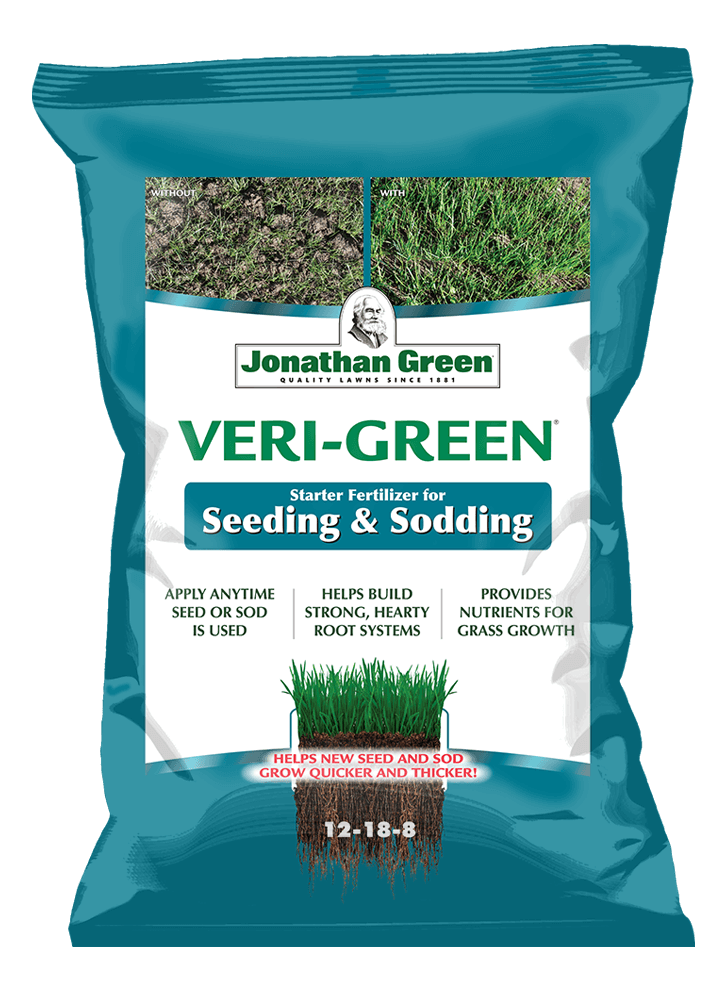How to Grow Grass from Seed
Great lawns start with great seed! Every lawn starts with tiny, but mighty seeds that will ultimately grow green, healthy grass. Cultivating a new lawn may seem like an overwhelming process. We have made it easier for you, however, by giving you everything you need to seed the lawn of your dreams!
Here is your essential, step-by-step lawn seeding guide:
1. Determine the best time to plant grass seed
The first, crucial step to seeding is timing. To ensure that your grass germinates, the best time to plant is when the soil temperature is above 50º F and below 70ºF. Planting when it’s too hot or too cold outside will hinder the seed’s ability to sprout and survive times of stress like drought.
The ideal time range lies in the fall from mid-August to mid-October. Remember, this is only a guideline and seasonal temperatures can change each year. Check your soil temperature before seeding to ensure that it’s not too hot or too cold for germination. If you are unable to plant in the fall or are eager to get a jumpstart on your lawn, the second-best time to plant grass seed is in the spring, between mid-March to mid-May.
You will also need to take your specific location and climate into consideration, as different varieties require different planting times. Warm-season grasses, for example, are best suited for seeding in the late spring to early summer, as warm temperatures and ample sunlight provide the best environment for warm-season seedlings to grow.
2. Calculate coverage amount
It’s important to determine how much grass seed you’ll need to cover your lawn so you can purchase the right amount. Before heading to the store, take the time to measure your lawn’s square footage.
The average lawn needs approximately one to five pounds of grass seed for every 1,000 sq. ft. Not all grass seed bags have the same coverage—even if they are the same weight—so pay close attention to the specific instructions on the product label. You can find the coverage amount and how to best spread grass seed on the front of bags.
3. Choose the right grass seed
Perhaps the most often overlooked lawn growing tip is choosing the right grass seed. This can be challenging, as there are many varieties to choose from. For the best results, take the following factors into consideration: climate, location, number of hours of sun your lawn receives, and the amount of traffic you have in the area you want to plant.
Warm-season grass varieties thrive best in the southern region of the country, where there are higher temperatures in the summer and moderately cool winters. These grass varieties require more sunlight than cool-season grasses. Cool-season grasses are best planted in the northern region, where winters are colder and summers are mild to moderately warm.
The quality of your grass seed also matters, as it ultimately decides the quality of your lawn. Make sure to choose superior grass seed varieties, like Jonathan Green Black Beauty for their heat and drought tolerance, disease resistance, and naturally dark green color.
4. Prepare and amend the soil

Your soil is the foundation of your lawn. Paying close attention to the health of your soil will benefit your lawn in the long run.
To prepare your soil for seeding, test your soil using a soil tester to ensure it has a balanced pH of 6.2 to 7. Having soil that is too acidic or too alkaline will create an unhealthy environment for your grass to grow in. Soil amendments like Mag-I-Cal Plus, balance soil pH and loosen hard soil resulting in your lawn being able to better access the water, air, and nutrients it needs to grow strong and tall.
Once you’ve ensured your soil has a healthy pH, check to see if your soil has any rocks or debris that need to be removed. This is also the time to level the ground, filling in any holes or depressions with soil in order to avoid water and seeds pooling in low spots. You want to have a clean and even slate for the new grass seeds to grow in.
Finally, test your lawn for compaction by using a screwdriver. Push a long screwdriver (at least 6 inches in length) into the ground. If you have trouble pushing it all the way into the soil, you likely have compaction. This will make it difficult for water, air, and nutrients to travel to your lawn’s root system. Applying Jonathan Green Love Your Soil® will loosen the soil while helping to stimulate soil microbial life.
5. Plant grass seed and fertilize
It’s time! To plant grass seed, set your spreader according to the settings listed on the back of the seed bag. Start by spreading seed around the perimeter of your lawn. Then, apply half the seed in one direction (north to south) and the other half in the opposite direction (east to west), making sure to overlap slightly each pass.
Next, rake the seed into the soil to ensure everything is adequately covered. Do not cover your seed with more than ¼ inch of soil. Sweep any excess seed or soil off of hard surfaces and back onto the lawn.
Adding a new seeding fertilizer to your lawn at the same time as planting will help give your seedlings a good feeding for healthy roots and growth development. Be sure to pay close attention to package instructions and only use a fertilizer that can be used on the same day you seed, such as Jonathan Green Veri-Green Starter Fertilizer for Seeding & Sodding.
Mentioned Products
6. Establish a watering schedule to keep seed moist

Your new seedlings will need to be kept moist to ensure they germinate. For the first few weeks after planting, give your seedbed light, frequent waterings two to three times per day: in the early morning, late morning, and early afternoon.
The germination period, or the time it takes for your seed to start growing, can vary depending on what type of grass seed variety you’ve planted. Perennial ryegrass, for example, only takes about 7 – 14 days to germinate. Kentucky bluegrass, on the other hand, takes longer to germinate in approximately 21 – 28 days.
Once your grass has reached a height of four inches, you can begin to decrease your waterings to two to three times per week. Water for longer periods during this time (approximately 30 minutes per zone.) On average, established lawns need about 1 – 1.5 inches of water per week, including rainfall.
7. Maintain your new lawn
Now that you’ve successfully seeded a new lawn, it’s important to maintain all of your hard work! For new grass, you should wait until the grass blade height is about four inches before mowing for the first time. Your regular mowing height should be set at about three inches. Be sure to never take off more than ⅓ of the grass blades when mowing.
Finally, establish a regular mowing and watering schedule, avoid excess traffic on your lawn, and identify and treat common problems.
Conclusion
Growing grass from seed is a rewarding experience that will ultimately produce a lawn you can be proud of. Once you have the correct knowledge, take the appropriate amount of time and care, and practice proper maintenance, your lawn will remain healthy and green!
For more lawn growing, maintenance, and troubleshooting tips, visit our learn page or library of resources.


